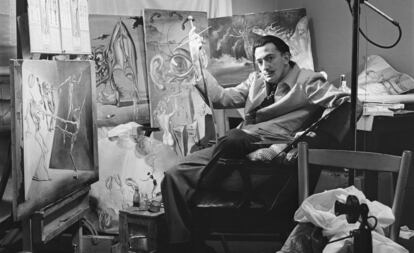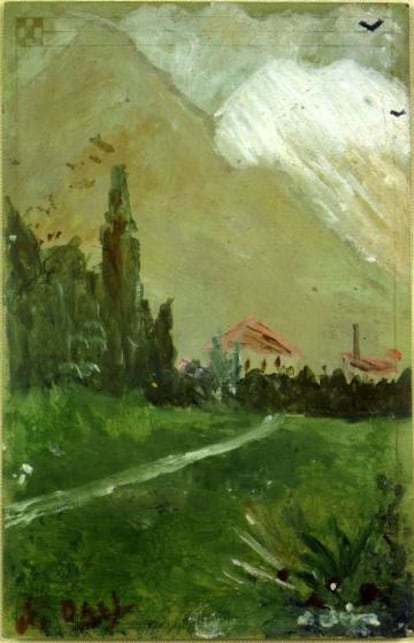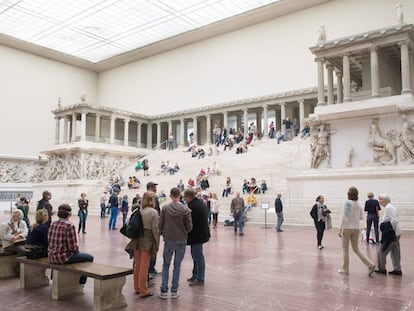An online catalogue tracing the lifetime journey of Salvador Dalí
Gala-Salvador Dalí Foundation has just completed a 17-year project to bring together more than 1,000 of his paintings online

More than 1,000 works from iconic surrealist painter Salvador Dalí can now be viewed at the click of a button thanks to a new online project from the Gala-Salvador Dalí Foundation in Figueras, Catalonia.
The foundation worked for 17 years to track down Dalí’s paintings and create one of the most encompassing collections to date, which includes the characteristics and origins of each piece. The new catalogue raisonné traces the artist’s journey from 1910 until 1983 – the year after Gala, his wife, muse and lifelong collaborator, passed away. The painter saw Gala as more than just inspiration, she was considered a co-author of his works. Indeed he signed many of his paintings “Gala Salvador Dalí.”

Gala died at 90 years of age in 1982 due to complications from a femur operation. After her death, Dalí, already old and infirm, sank into a deep depression, from which he never recovered. He made just a few paintings in the months following her death, before abandoning his work completely in 1983.
Gala met Dalí in 1929 on a trip to Catalonia when she was traveling with her then-husband Paul Éluard and a group of friends. The encounter was dramatic, just like the work and history of both. Gala Éluard left her successful life in André Breton’s Paris and moved to a far-flung city on the Mediterranean coast with a young man who was a nobody – an audacious nobody who spoke openly about eating feces, but still a nobody. But his emphatic proposal, so different to the uptight comme il faut attitude of Breton’s gang, must have made a mark on the young Gala: she left everything for him.
Dalí’s painting Juego lúgubre, associated with that historic meeting, is one of the 1,000 pieces catalogued by the Gala-Salvador Foundation, which, along with the Reína Sofía Museum and the Salvador Dalí Museum in St. Petersburg, Florida, has one of the most complete collections of his works.
The catalogue spans from 1910 until 1983 and is divided into five periods
This collection is divided across three sites – Gala’s home, the Púbol castle, which is the final resting place of Gala and Dalí, and the Dalí Theater and Museum in Figueres, the most visited of the three. But the foundation offers more than just a tourist attraction to pull in crowds who, like the friends of Bretón, are only interested in the painter’s charisma and audacity. It also has one of the most internationally renowned research centers on Salvador Dalí – the Center for Dalí Research.
Here at the center, headed by Montse Aguer and located at the Dalí Theater and Museum in Figueres, a team of mostly female experts dedicate themselves to conserving, cataloguing and providing context and information about materials from the other sites. This includes drawings, photographs, publications, objects, suits, works of friends – anything that relates to the life of Gala and Dalí.
In this spirit, the foundation has completed the online catalogue raisonné of paintings by Salvador Dalí – a tool that promises to provide invaluable insight to students and fans of Dalí’s work. It is not just a project that will improve and create a more accurate understanding of the painter’s work, it is also a way to organize the artist’s body of work, and avoid mistaken attributions, something that often happens with popular artists. In the future, the catalogue, which is open to the possibility for new Dalí discoveries, could also help build virtual realities of the painter’s surrealist worlds.
In this sweeping catalogue of 1,000-plus paintings, there is only one work missing: the artist himself.
English version by Melissa Kitson.
Tu suscripción se está usando en otro dispositivo
¿Quieres añadir otro usuario a tu suscripción?
Si continúas leyendo en este dispositivo, no se podrá leer en el otro.
FlechaTu suscripción se está usando en otro dispositivo y solo puedes acceder a EL PAÍS desde un dispositivo a la vez.
Si quieres compartir tu cuenta, cambia tu suscripción a la modalidad Premium, así podrás añadir otro usuario. Cada uno accederá con su propia cuenta de email, lo que os permitirá personalizar vuestra experiencia en EL PAÍS.
¿Tienes una suscripción de empresa? Accede aquí para contratar más cuentas.
En el caso de no saber quién está usando tu cuenta, te recomendamos cambiar tu contraseña aquí.
Si decides continuar compartiendo tu cuenta, este mensaje se mostrará en tu dispositivo y en el de la otra persona que está usando tu cuenta de forma indefinida, afectando a tu experiencia de lectura. Puedes consultar aquí los términos y condiciones de la suscripción digital.
More information
Archived In
Últimas noticias
Pinochet’s victims grapple with José Antonio Kast’s rise in Chile
Reinhard Genzel, Nobel laureate in physics: ‘One-minute videos will never give you the truth’
How Japan is trying to avert ‘digital defeat’
The complicated life of Francesca Albanese: A rising figure in Italy but barred from every bank by Trump’s sanctions
Most viewed
- Pablo Escobar’s hippos: A serious environmental problem, 40 years on
- Why we lost the habit of sleeping in two segments and how that changed our sense of time
- Charles Dubouloz, mountaineering star, retires at 36 with a farewell tour inspired by Walter Bonatti
- Trump’s obsession with putting his name on everything is unprecedented in the United States
- The Florida Keys tourist paradise is besieged by immigration agents: ‘We’ve never seen anything like this’











































